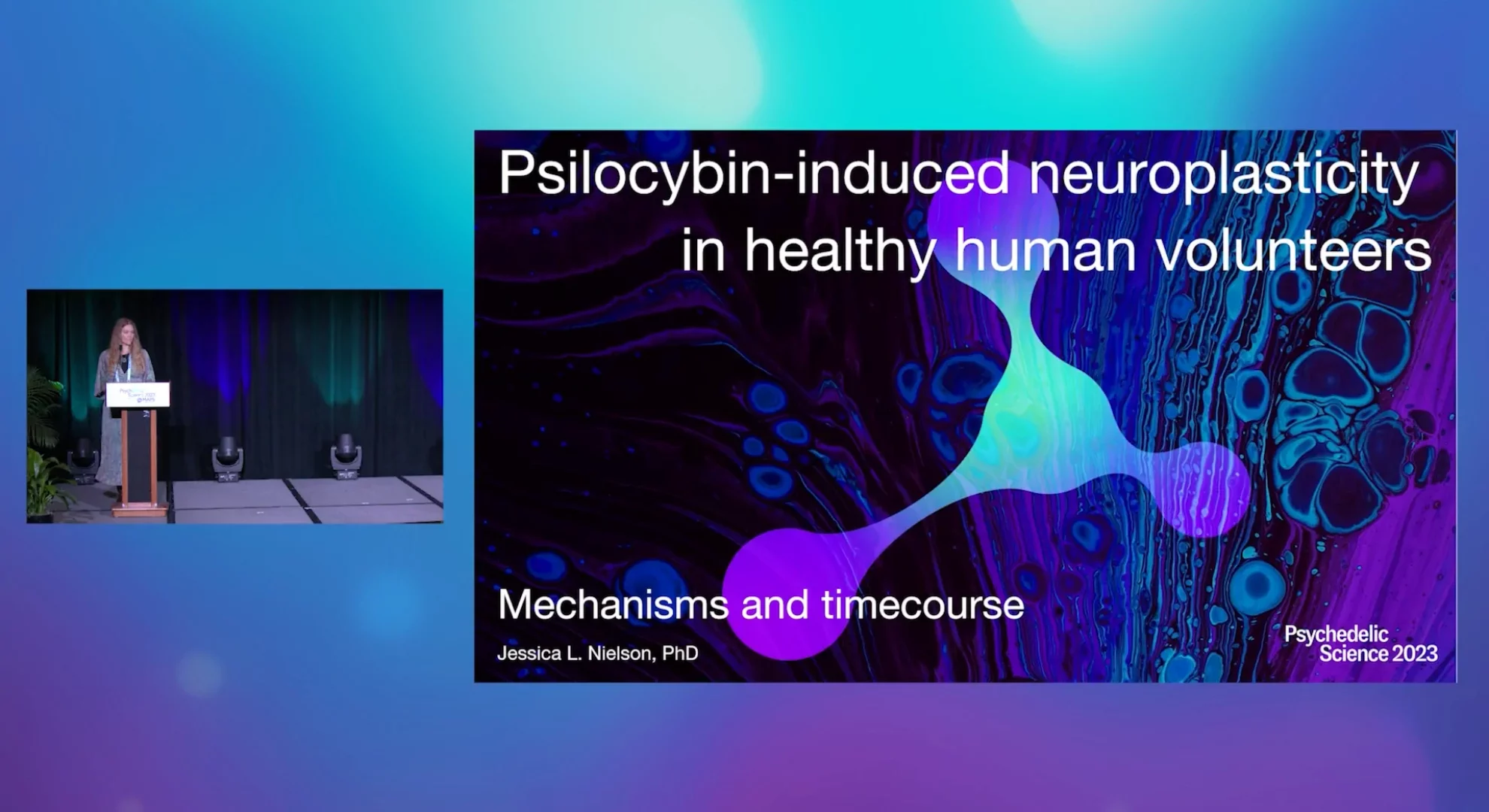
Mechanisms and time-course of psilocybin-induced neuroplasticity in healthy human volunteers.
Recent therapeutic breakthroughs with psilocybin for mental health disorders have prompted the field to probe into the mechanisms of action of this promising therapy. A major focus of this therapeutic potential is integrative therapy after the psilocybin experience, prompting an interest in whether there is an optimal window of opportunity that can be harnessed to maximize this therapeutic potential. Our current study is using psilocybin as a probe to investigate how psilocybin is changing the brain, and for how long. We focus on investigating the neurological changes involved in the profound alterations in visual perception during the acute psilocybin experience using EEG and psychophysics, and structural and functional changes during the subacute phase using a time-course of DWI and fMRI. Our study design uses a triple blind, placebo-controlled, cross-over model in healthy human volunteers. Data will be presented on our preliminary findings about changes in visual event-related potentials in psilocybin compared to placebo during the peak phase of the psilocybin experience, changes in structural and functional connectivity during the first week after a psilocybin experience, and implications this may have on promoting the neuroplastic window with psilocybin-assisted therapies in patients.
Share: Mechanisms and time-course of psilocybin-induced neuroplasticity in healthy human volunteers.
Facebook
Twitter
LinkedIn
Email




